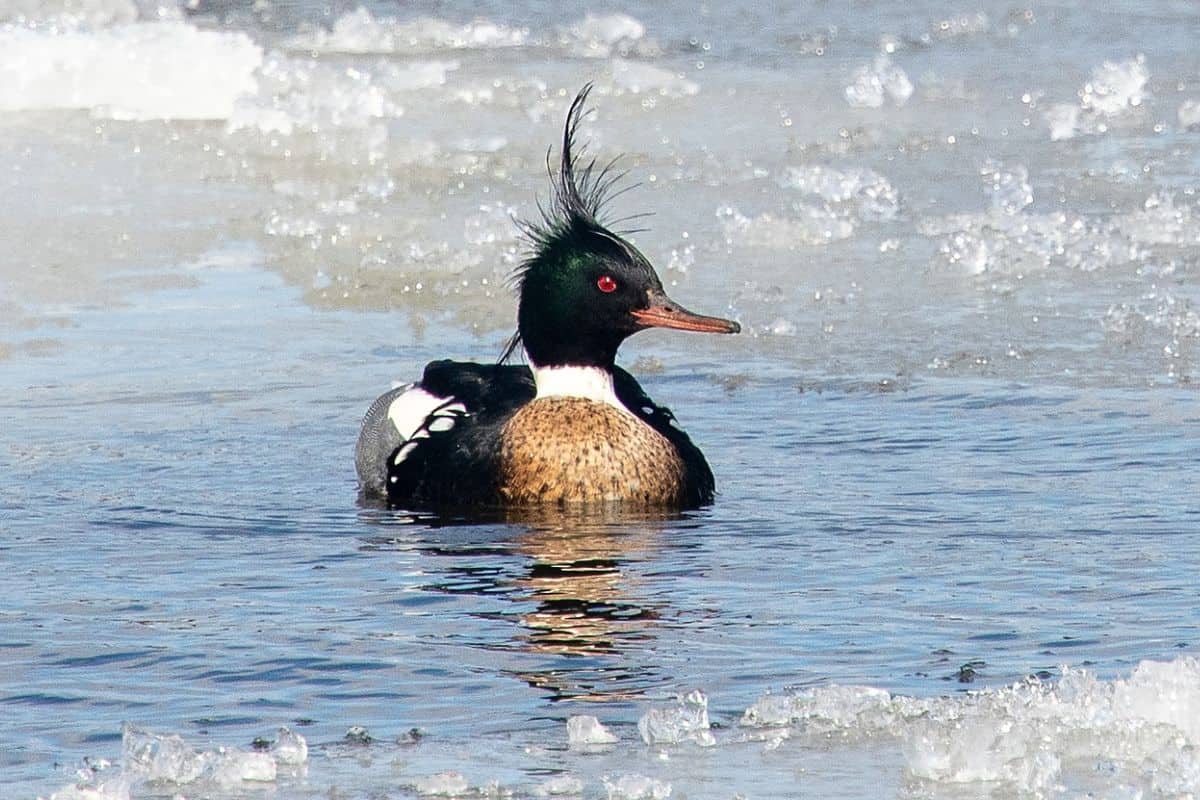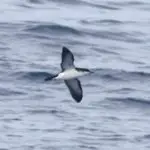Common Name: Red-breasted Merganser
Scientific Name: Mergus serrator| Size | Diet | Range in Hawaii | Status in Hawaii |
|---|---|---|---|
| 20 in. - 26 in. | crustaceans, insects and fish | Kauai, Oahu, and the Big Island | Least Concern |
Introducing the Red-breasted Merganser (Mergus serrator), a striking waterfowl species with a remarkable presence. In this article, we explore the intriguing world of the Red-breasted Merganser, uncovering its distinct features, fascinating behaviors, and preferred habitats. While not native to Hawaii, occasional sightings of this magnificent bird species have added allure to the avian landscape of the islands.
Red-breasted Merganser
Appearance
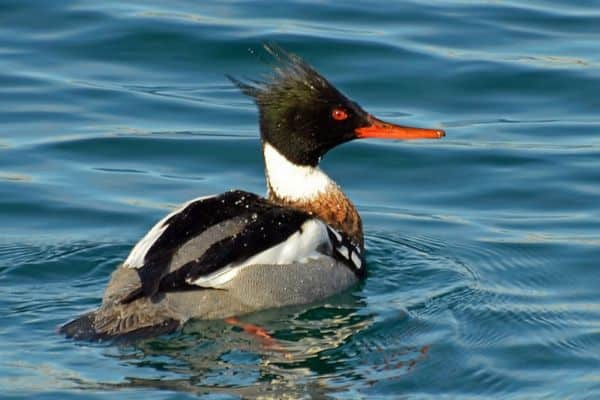
The Red-breasted Merganser is a striking waterfowl species known for its vibrant appearance. The male features a beautiful reddish-brown head with a sharp crest, contrasting with a white neck, black back, and gray sides.
Its breast is adorned with a rich chestnut color, giving the bird its name. Females have a more subdued appearance, with a brownish-gray body and a reddish-brown crest.
Both males and females have slender, streamlined bodies and long, serrated bills, which they use to catch fish. On average, Red-breasted Mergansers measure around 20-26 inches (51-66 cm) in length, making them a medium-sized duck species. Their striking plumage and elegant physique make them a true marvel to behold in their aquatic habitats.
Diet
The Red-breasted Merganser has a specialized diet primarily consisting of fish. These agile diving birds are highly skilled at hunting underwater, using their long, serrated bills to catch their prey.
They often target small fish such as minnows, smelt, and perch, which they chase and capture beneath the water’s surface. Red-breasted Mergansers are equipped with sharp, pointed bills that allow them to grasp and secure their slippery prey effectively.
Additionally, they may also consume crustaceans, insects, and occasionally small amphibians. Their piscivorous diet reflects their adaptability to aquatic habitats, where they can actively pursue and catch their prey to sustain their energy needs.
Nesting
The Red-breasted Merganser follows a unique nesting pattern. They typically build their nests in secluded areas near freshwater lakes, rivers, or coastal marshes. The female merganser constructs the nest, which is often a shallow depression lined with grasses, feathers, and down from her own plumage.
These nests are typically located on the ground, hidden among vegetation or in natural cavities such as tree stumps or rocky crevices. Red-breasted Mergansers are solitary nesters, with each female establishing her own nest.
They lay a clutch of 6-12 eggs, which are pale green or buff in color. The female incubates the eggs for about 25-35 days, diligently keeping them warm and protected.
Once the eggs hatch, the tiny chicks are precocial, meaning they are covered in down and capable of leaving the nest shortly after hatching. The female leads her brood to the water, where they begin swimming and foraging for small aquatic prey.
Behavior
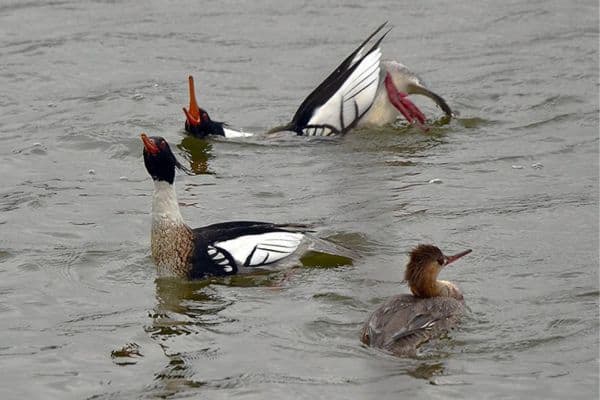
The Red-breasted Merganser is known for its energetic and agile behavior both on land and in the water. These waterfowl are highly skilled divers, capable of diving deep underwater in search of their prey.
They use their long, slender bodies and serrated bills to capture fish, crustaceans, and aquatic invertebrates. During the breeding season, Red-breasted Mergansers engage in captivating courtship displays. The males perform elaborate head movements, fluffing their crests and extending their necks to showcase their vibrant plumage.
They also emit a variety of calls and engage in synchronized swimming to attract females. These mergansers are typically solitary or found in small groups, although they may congregate in larger flocks during migration or at rich feeding grounds.
They are known for their fast and agile flight, with their wings producing a distinctive whistling sound as they take off. Red-breasted Mergansers are highly territorial during the breeding season and defend their nesting sites from other individuals. They are also known to perform aggressive behaviors such as head-bobbing, hissing, and bill-snapping to establish dominance or protect their territories.
Habitat
The Red-breasted Merganser is primarily a species of freshwater and coastal habitats. They can be found in a variety of environments, including lakes, rivers, estuaries, and coastal areas.
These mergansers have a preference for habitats with clear, shallow water and abundant fish populations, as they rely on these resources for their diet. During the breeding season, Red-breasted Mergansers typically nest in wooded areas near water bodies, such as in dense vegetation along the shoreline or on small islands.
They seek out secluded locations that provide suitable cover and protection for their nests and offspring. In their non-breeding range, Red-breasted Mergansers can be found in both marine and freshwater environments.
They are often observed in coastal areas, including rocky shorelines, bays, and inlets, where they dive and forage for fish and other aquatic prey. The habitat preference of Red-breasted Mergansers reflects their adaptability to a range of aquatic ecosystems, making them well-suited for both inland and coastal environments.
Range
The Red-breasted Merganser is known to have a presence in the Hawaiian Islands. According to reports and observations, this species has been spotted on the islands of Kauai, Oahu, and the Big Island. It is important to note that while the Red-breasted Merganser is found in Hawaii, its occurrence is not widespread across all the islands.
Conservation Status
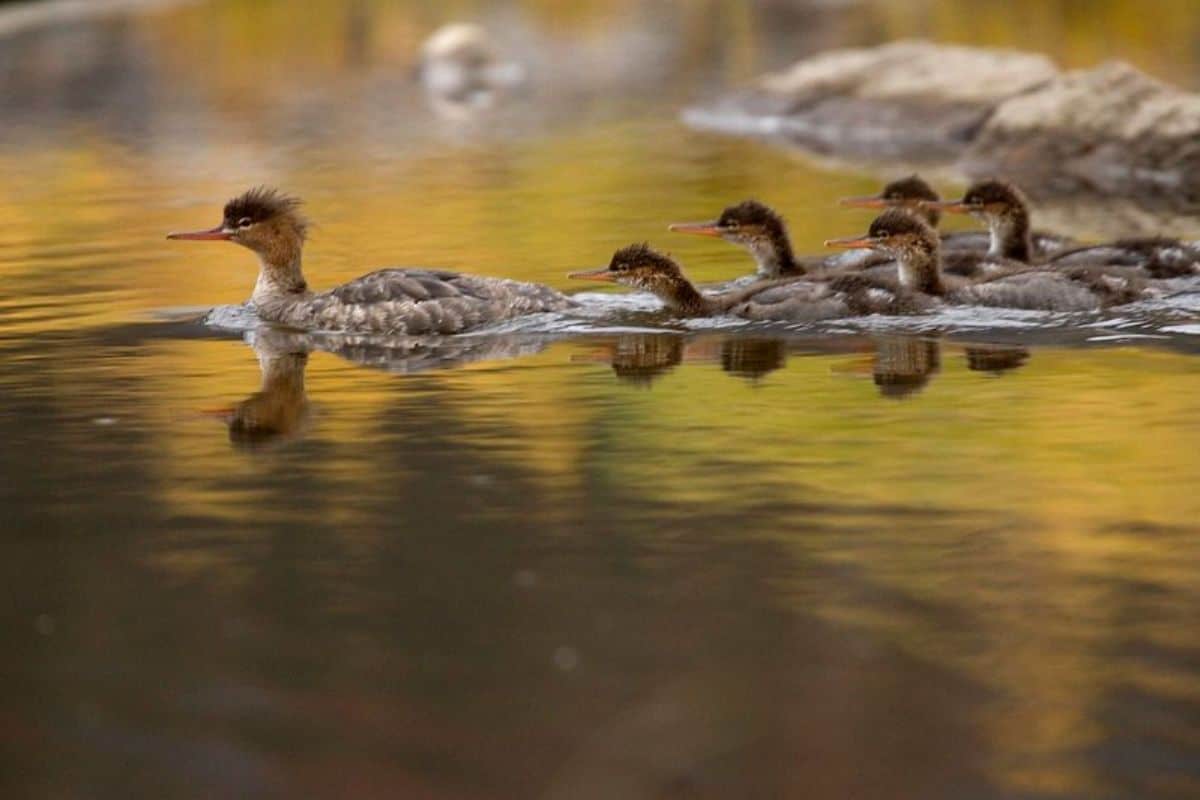
The Red-breasted Merganser is listed as “Least Concern” on the global conservation status by the IUCN Red List. However, it is worth noting that regional conservation statuses may differ. In Europe, the species is classified as “Near Threatened” due to declining populations in some areas.
This variation in conservation status highlights the importance of considering regional factors and implementing region-specific conservation measures to ensure the long-term survival of the Red-breasted Merganser. In Hawaii, where occasional sightings of this species have been reported, the conservation status and specific conservation efforts may vary, as it is not a native breeding species in the islands.
Interesting Facts
1. Versatile Feeders
While fish comprise a significant part of their diet, Red-breasted Mergansers are opportunistic feeders and also consume crustaceans, insects, amphibians, and small mammals.
2. Cooperative Brood Care
Red-breasted Mergansers exhibit a cooperative breeding behavior where females lay their eggs in the nests of other females. Multiple females may share nest-building and chick-rearing responsibilities.
3. Seasonal Migrations
These mergansers undertake seasonal migrations, with some populations traveling long distances to reach their breeding or wintering grounds. They can be found in various coastal and freshwater habitats across their range.
4. They are Agile Fliers
Red-breasted Mergansers are fast and agile fliers, capable of reaching speeds up to 80 km/h (50 mph). Their long, narrow wings and streamlined bodies enable them to navigate swiftly through the air.
5. Impressive Courtship Displays
During the breeding season, male Red-breasted Mergansers engage in elaborate courtship displays. They erect their crests, shake their heads, and perform vigorous swimming movements to attract females.
Frequently Asked Questions
1. Are Red-breasted Mergansers social birds?
Red-breasted Mergansers are typically seen in small groups or solitary individuals outside of the breeding season. During the breeding season, males engage in courtship displays to attract females.
2. Are Red-breasted Mergansers good swimmers?
Red-breasted Mergansers are excellent swimmers and divers. Their streamlined bodies and webbed feet allow them to navigate through water with agility and swim underwater in pursuit of prey.
3. How long can Red-breasted Mergansers stay underwater?
Red-breasted Mergansers are capable of staying submerged for up to a minute or more while diving in search of prey. They have adaptations that enable them to hold their breath and swim underwater efficiently.
4. How long do Red-breasted Mergansers live?
The average lifespan of Red-breasted Mergansers is around 5-10 years. However, some individuals have been known to live for over 15 years.
